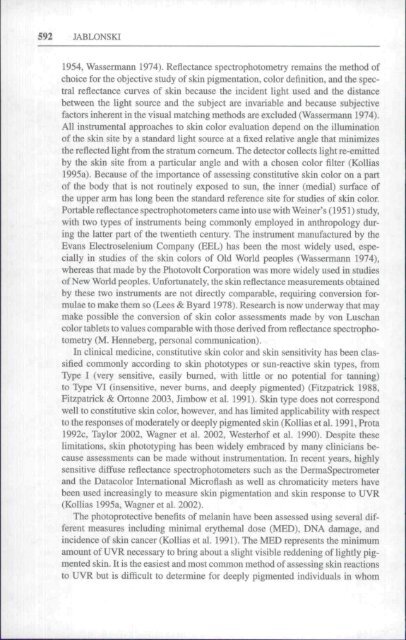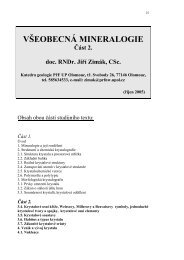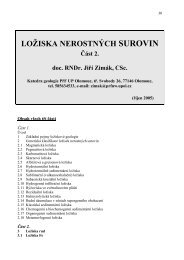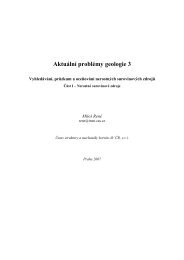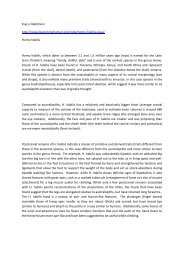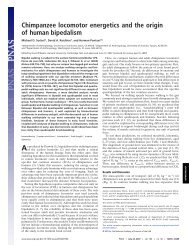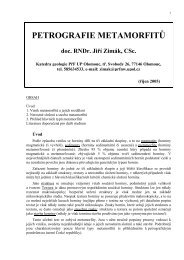THE EVOLUTION OF HUMAN SKIN AND SKIN COLOR Nina G ...
THE EVOLUTION OF HUMAN SKIN AND SKIN COLOR Nina G ...
THE EVOLUTION OF HUMAN SKIN AND SKIN COLOR Nina G ...
Create successful ePaper yourself
Turn your PDF publications into a flip-book with our unique Google optimized e-Paper software.
592 JABLONSKI1954, Wassermann 1974). Reflectance spectrophotometry remains the method ofchoice for the objective study of skin pigmentation, color definition, and the spectralreflectance curves of skin because the incident light used and the distancebetween the light source and the subject are invariable and because subjectivefactors inherent in the visual matching methods are excluded (Wassemiann 1974).All instrumental approaches to skin color evaluation depend on the illuminationof the skin site by a standard light source at a fixed relative angle that minimizesthe reflected light from the stratum comeum. The detector collects light re-emittedby the skin site from a particular angle and with a chosen color filter (Kollias1995a). Because of the importance of assessing constitutive skin color on a partof the body that is not routinely exposed to sun, the inner (medial) surface oftbe upper arm has long been the standard reference site for studies of skin color.Portable reflectance spectrophotometers came into use with Weiner's (1951) study,with two types of instruments being commonly employed in anthropology duringthe latter part of the twentieth century. The instrument manufactured by theEvans Electroselenium Company (EEL) has been the most widely used, especiallyin studies of the skin colors of Old World peoples (Wassermann 1974).whereas that made by the Photovolt Corporation was more widely used in studiesof New World peoples. Unfortunately, tbe skin reflectance measurements obtainedby these two instruments are not directly comparable, requiring conversion formulaeto make them so (Lees & Byard 1978). Research is now underway that maymake possible the conversion of skin color assessments made by von Luschancolor tablets to values comparable with those derived from reflectance spectrophotometry(M. Henneberg, personal communication).In clinical medicine, constitutive skin color and skin sensitivity has been classifiedconunonly according to skin phototypes or sun-reactive skin types, fromType I (very sensitive, easily bumed, with little or no potential for tanning)to Type VT (insensitive, never bums, and deeply pigmented) (Fitzpatrick 1988,Fitzpatrick & Ortonne 2003, Jimbow et al. 1991). Skin type does not correspondwell to constitutive skin color, however, and has limited applicability with respectto the responses of moderately or deeply pigmented skin (Koilias et al. 1991, Prota1992c, Taylor 2002, Wagner et al. 2002, Westerhof et al. 1990). Despite theselimitations, skin phototyping has been widely embraced by many clinicians becauseassessments can be made without instrumentation. In recent years, highlysensitive diffuse reflectance spectrophotometers such as the DermaSpectrometerand the Datacolor Intemational Microflash as well as cbromaticity meters havebeen used increa.singiy to measure skin pigmentation and skin response to UVR(Kollias 1995a. Wagner et al. 2002).The photoprotective benefits of melanin have been assessed using several differentmeasures including minimal erythemal dose (MED), DNA damage, andincidence of skin cancer (Kollias et al. 1991). The MED represents the minimumamount of UVR necessary to bring about a slight visible reddening of lightly pigmentedskin. It is the easiest and most common method of assessing skin reactionsto UVR but is difficult to determine for deeply pigmented individuals in whom


